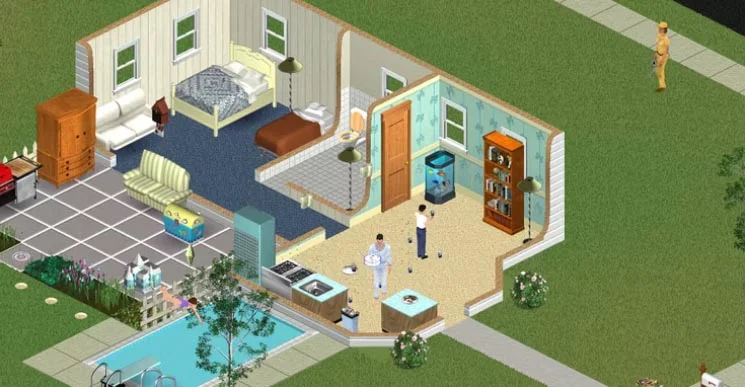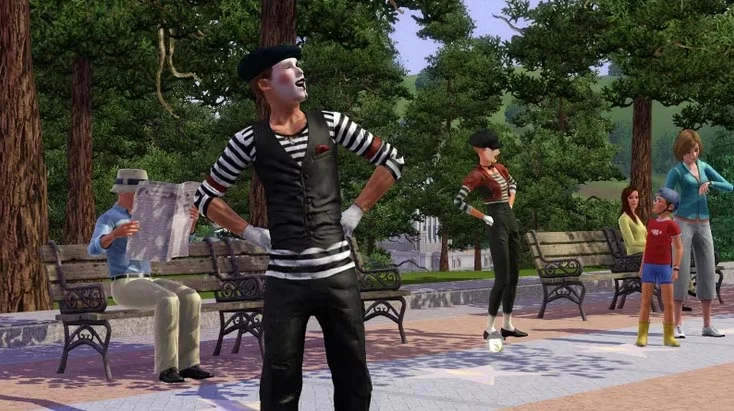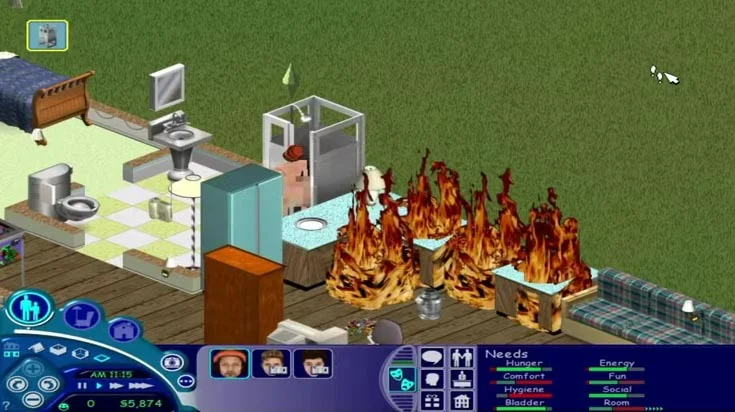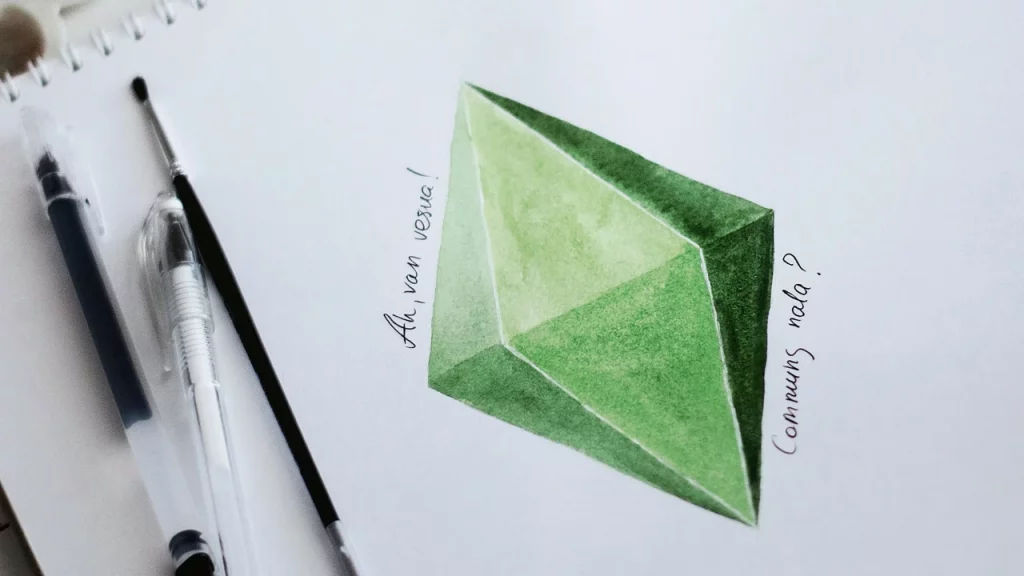I still remember that time I set everything on fire. And I thought everything was fine (like the classic meme). How many hours have you spent watching your Sims woohoo in weird places or, better yet, trying to build a pool without a ladder?
If you’ve ever found yourself explaining the complex love triangle between your Sims to a very confused friend, you’re in the right place. Do you know there’s a lot more to this game than just life simulations and odd mishaps? Join me on this wild ride of 50 epic Sims facts!
Playing God with digital lives.
Unknown
The Sims Facts
So let’s start our journey. But remember: read carefully because there is a quiz I created for you at the end of the article to test your knowledge. Can you score ten out of ten?
- The Sims is a creation of Maxis, brought to the market by Electronic Arts.
- The game debuted in February 2000, soaring to the top of the charts swiftly.
- The brain behind The Sims, Will Wright, found inspiration after a fire devastated his house, forcing him to start over.
- The series consists of four primary games: The Sims, The Sims 2, The Sims 3, and The Sims 4.
- The Sims were first imagined as a tool for architectural design, with the Sims characters being secondary.
- The characters in the game communicate in a unique language known as Simlish.
- Simlish, while fictional, has been developed to maintain a sense of uniformity in its sounds and tones.
- With The Sims 2, the concept of life phases was introduced, letting characters grow from infancy to old age.
- In The Sims 3, gamers could freely traverse a continuous open environment.
- The Sims 4 placed emotions at the forefront, impacting character interactions and life decisions.
- Over time, a variety of expansion packs were launched, bringing in features such as seasons, animal companions, and urban living.
- The Sims franchise boasts sales exceeding 200 million copies globally.
- Stars like Katy Perry and Baby Ariel have made guest appearances in the gameplay.

- The Sims FreePlay and The Sims Mobile are mobile variants of the main game.
- The Sims inspired a reality show titled “The Sims Spark’d.”
- An online marketplace in The Sims 3 lets players acquire digital assets with real currency.
- A plethora of fan-driven sites and modification communities enable gamers to integrate customized content.
- The Sims 4 offers enhanced character customization options, spanning intricate facial details to body configurations.
- Memorable moments in The Sims 2 could be relived through pictorial memories.
- The game series delves into real-life scenarios, such as personal relations, professions, and life’s ups and downs.
- When a character’s end is near, The Grim Reaper emerges, and players might even strike up a friendship with him.
- The Sims 4 brought multitasking into the mix, enabling activities like simultaneous eating and television watching.
- Post-character demise in The Sims 3, players had the option to trap and auction spirits.
- Players can leverage cheat codes for extra currency, named Simoleons, or to unveil concealed functionalities.
- The “motherlode” cheat instantly credits the player with 50,000 Simoleons.
- Alien encounters have been a game feature since The Sims 2, complete with alien abductions and hybrid progeny.
- The Sims have been honored with numerous accolades, including Game of the Year by multiple institutions.
- The Sims 3 offered time-travel adventures, transporting characters to diverse historic eras.

- The Sims 4: Cottage Living introduced players to cross-stitching and barnyard animals.
- The series has explored themes such as college existence, holiday spots, and mystical worlds in its expansion packs.
- The mood of a character is indicated by a green diamond icon, known as Plumbobs, hovering above them.
- Fans can acquire an actual Plumbob headdress as collectible merchandise.
- The concept of meteorological conditions made its debut in The Sims 2: Seasons, receiving much fan acclaim.
- A concealed universe in The Sims 4 named Sixam represents an extraterrestrial abode.
- The Sims 3 equipped players with a Film Creator tool for devising and disseminating movies and narratives.
- The Sims Medieval shifted the focus to the age of chivalry, incorporating quests and cavaliers.
- Within the gameplay narrative, familiar households like the Goths and Landgraabs frequently return.
- The supernatural spectrum of the game encompasses beings such as bloodsuckers, sea nymphs, and magical practitioners.
- The first animal companion in The Sims was a humble aquatic creature in its foundational version.

- The Sims series features a melancholic jester who amplifies the despondency of the characters.
- The Sims 4 integrated the notion of affinity groups, enabling characters to affiliate with like-minded clusters.
- The game employs “WooHoo” as a discreet reference to amorous interactions between characters.
- “Strangerville” in The Sims 4 brought in a narrative-centric gameplay component.
- The game series harbors concealed treasures, such as the carnivorous plant known as cowplant, which can consume characters.
- Capturing an image of Bigfoot in The Sims 2 could fetch a handsome amount of Simoleons when sold.
- The musical compositions of the game, particularly the design and procurement tracks, resonate deeply with its aficionados.
- The Sims 3’s World Adventures permitted characters to voyage to places reminiscent of China, Egypt, and the French nation.
- Characters in the game can partake in occasions like birth anniversaries, matrimonial ceremonies, and academic completions.
- A clandestine fae dominion named Sylvan Glade awaits players in The Sims 4.
- The Sims has synergized with commercial entities like IKEA and H&M, integrating real-world items into the digital universe.
The Sims Myths

One of the things that got on my nerves when I was a kid was that everyone was telling me that games like this were going to make me anti-social. Jokes to them who are now scrolling endlessly in their day.
- Playing “The Sims” Makes You Anti-Social
Just like any other hobby, playing the game can be a source of relaxation and creativity for many players. Many users connect with others online, sharing their stories and buildings, thereby fostering a sense of community. - The Game Promotes Materialism Because Sims Always Want More Things
While Sims do have desires for objects or experiences, the game also emphasizes relationships, skill-building, and life events. It mirrors real life in that we all have wants, but it doesn’t necessarily mean we’re materialistic. - “The Sims” Is Only for Young People or Women
The series attracts a diverse audience of all ages and genders. Its sandbox nature allows players from different backgrounds to create and control life scenarios as they see fit, appealing to a broad range of people. - It’s Just a “Dollhouse” Game
While it does allow players to design homes and customize their characters, it’s also about life simulation, strategy, and storytelling. Players tackle real-life challenges like budgeting, career progression, and interpersonal relationships. - All Sims Games Are the Same
Each installment of “The Sims” series introduces new features, graphics, and gameplay mechanics. While the core concept remains consistent, every version offers a unique experience, keeping players engaged and eager for the next.
No products found.
The Sims FAQ

There is some nostalgia so far. Let’s see some frequently asked questions about the game, and then it’s time for the ultimate showdown (I mean, the quiz).
- What is the Sims lore?
The Sims is a life simulation game focusing on virtual people called “Sims.” While not traditional lore, there are recurring families and storylines, like the Goths, across the series. - When was The Sims created?
“The Sims” debuted on February 4, 2000, developed by Maxis and published by Electronic Arts. - Is The Sims game kid-friendly?
The Sims is generally kid-friendly but contains some mature themes. It often has an ESRB rating of “T” for Teens. - How has the gameplay evolved throughout The Sims series?
The series has introduced enhanced character creation, interactive worlds, aspirations, emotions, and expanded life stages over time. - Can players share their creations with others in The Sims?
Yes! From “The Sims 2” onward, players can share creations like Sims and houses via an online gallery or exchange.
The Sims Quiz

Let’s see how many hours you spent in the game and if you are a good reader. Answer everything wrong, and your Sim’s next woohoo might just be with the Grim Reaper!
Conclusion
In conclusion, The Sims have taught us that talking to plants can improve their health, woohoo-ing in obscure places is a life goal, and that we should always beware of pool ladders.
It’s been a wild ride diving into these epic facts, and I hope you had as much fun as I did. One final question: Did your Sim ever accidentally start a kitchen fire while making a salad? (Asking for a friend.) Share your funniest Sims moment in the comments!


